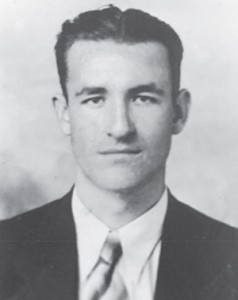When Ron Weakley began working at a PG&E steam plant in San Francisco in 1940, many veterans of the 1937 CIO organizing drive were now part of a new CIO group called the Utility Workers Organizing Committee. Weakley soon got involved.
In 1941 Weakley was transferred to PG&E’s Avon plant in the East Bay, where he found other activists interested in the CIO. About a dozen of them met one day after work at a bar in the Plaza Hotel in Concord and resolved to start a local of the UWOC. Weakley ran the meeting.
“He acted like he had the experience and the background to know what to do and what to expect and we just followed,” recalled Ray Michael, one of the participants.
On April 17, 1941 they were chartered as Local 169 of the Utility Workers Organizing Committee, with Weakley as their de facto leader. There were UWOC locals elsewhere at PG&E, but Weakley wasn’t waiting around for them to act. In August Local 169 petitioned the NLRB for an election in the East Bay, and in October informed PG&E they would strike if necessary to force the company to the bargaining table.
PG&E believed these activists might win an election in the East Bay. PG&E asked the NLRB for a company-wide election instead, believing this gave the company a better chance to defeat the union. IBEW 1245, not wanting the UWOC to get an edge in the competition to organize PG&E, backed the company’s position.
The IBEW and UWOC, in addition to battling PG&E, were now at war with each other.
